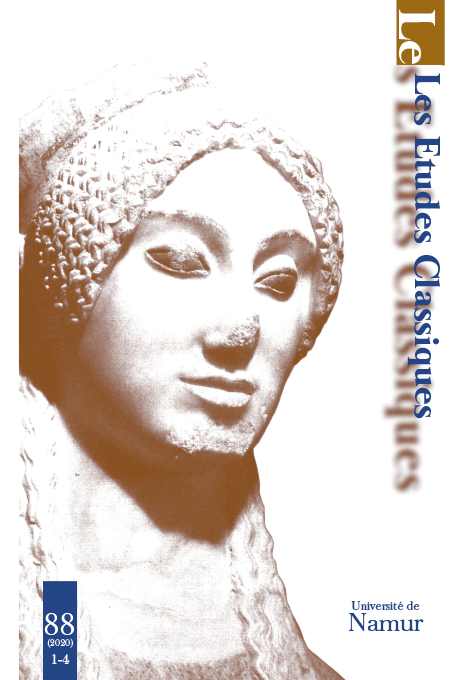 previous article in this issue previous article in this issue | next article in this issue  |

|
Document Details : Title: La datation d'Apsyrtos Subtitle: Données militaires et prosopographiques Author(s): PETITJEAN, Maxime Journal: Les Études Classiques Volume: 87 Issue: 1-4 Date: 2019 Pages: 331-349 DOI: 10.2143/LEC.87.1.3290475 Abstract : La période d’activité d’Apsyrtos a été vivement débattue par les spécialistes de la littérature vétérinaire antique. Contre la communis opinio qui, en se fondant sur la Souda, rapprochait cet auteur du règne de Constantin Ier, le philologue suédois G. Björck estimait qu’Apsyrtos avait vécu entre le milieu du IIe siècle et le milieu du IIIe siècle apr. J.-C. Sa démonstration, exposée en 1944 dans un opuscule consacré aux auteurs hippiatriques grecs, a été récemment contestée par S. Lazaris au profit d’un retour à la datation constantinienne. À rebours de ce récent revirement, la présente contribution montre qu’Apsyrtos n’a pu réaliser son œuvre après l’époque tétrarchique. L’onomastique de ses correspondants ne s’accorde pas avec la première moitié du IVe siècle, pas plus que les grades militaires qui leur sont associés. Les rares individus pouvant potentiellement être identifiés grâce à l’épigraphie ont vécu avant le règne de Dioclétien et le στρατηλάτης Ursus mentionné dans une des lettres d’Apsyrtos n’est probablement pas Flavius Ursus, cos. 338. The date of Apsyrtos has been hotly debated among specialists of ancient veterinary literature. Against his predecessors who, in agreement with the Suda, considered Apsyrtos to be active during the reign of Constantine I, the Swedish philologist G. Björck thought that he lived between the middle of the second century and the middle of the third century AD. G. Björck expounded his demonstration in a small book published in 1944, but was recently challenged by S. Lazaris, who made a case for the Constantinian date. Against this point of view, the present article shows that the Greek horse-doctor could not have realized his work after the Tetrarchic era. Neither the names of Apsyrtos’ addressees nor the military ranks that are associated with them are consistent with a fourth century date. The few individuals who could be identified through epigraphy lived before the reign of Diocletian and the στρατηλάτης Ursus mentioned in one of Apsyrtos’ letters is probably not Flavius Ursus, cos. 338. |
 |
